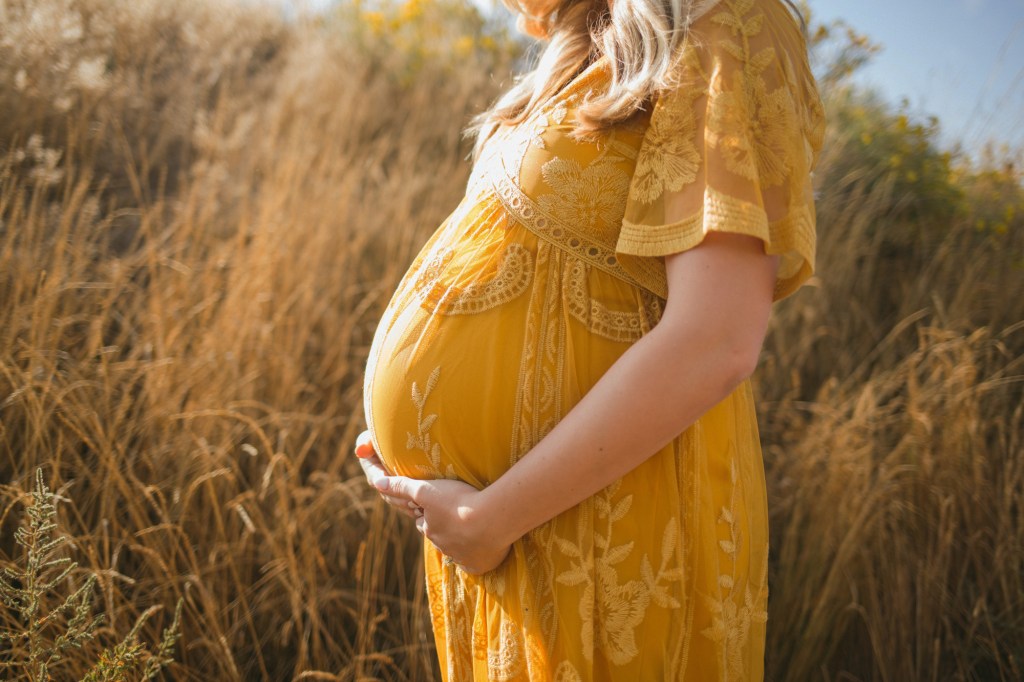Your cart is currently empty!
Pregnancy & Iron Deficiency

[Halle Tecco](https://www.google.com/url?q=https://natalist.com/blogs/learn/meet-halle-tecco&sa=D&source=docs&ust=1655855382294176&usg=AOvVaw085ygz6TQGdHnD6T32A6Yu), Founder and CEO of [Natalist](https://natalist.com/), on pregnancy and iron-deficiency.
Your body goes through many significant changes while pregnant. On top of a growing bump, compressed bladder, and tender breasts, your amount of blood increases by 30-50%. This means you need a lot of iron to make new red blood cells. Red blood cells carry oxygen from our lungs to the rest of our body. They also gather carbon dioxide and bring it back to our lungs to be exhaled.
As your blood volume increases, it can be difficult for your body to maintain its iron levels. When your body is using more iron than you are consuming, you can become anemic. Mild anemia is common during pregnancy, but more severe anemia is a concern because it can lead to low birth weight, premature births, and maternal mortality.
In America, 18% of pregnant women get diagnosed with an iron-deficiency. These rates increase each trimester, with 6.9% in the first, 14.3% in the second, and 28.4% in the third. Over the course of your pregnancy, your total blood volume doubles.

Symptoms of an Iron Deficiency:
Some people don’t experience any symptoms at all, which is why it is good to check in with your OBGYN often. Others start with mild symptoms that worsen throughout pregnancy. Common symptoms to look out for include.
- Fatigue
- Shortness of breath
- Lightheadedness
- Worsening vision
- Cold hands and feet
- Chest pain
- Weakness
- Difficulty concentrating
- Pale skin, lips, and nails
If you think you may have an iron-deficiency, it is crucial to see a doctor before self-diagnosing. Never take an iron supplement without a prescription from your doctor, because overdosing on iron can be life threatening.

Who is at risk?
Although iron is found in many foods, such as leafy greens, lentils, and red meat, iron absorption is difficult. Some pregnant women are at a higher risk for iron-deficiency including:
- Having one pregnancy shortly after the other
- Are pregnant with multiple children
- Are vomiting often due to extreme morning sickness
- Are vegetarian or vegan
- Had a heavy pre-pregnancy menstrual flow
During your pregnancy you will take a CBC (complete blood count) test. The CBC test counts the different types of cells that are in your blood. The amount of red blood cells can show if you have a certain type of anemia. This test is done twice, at the beginning and near the end of your pregnancy. If you feel like you have anemia symptoms, don’t wait until your routine test. Ask your doctor to get tested sooner.

Know the Numbers:
- Your hematocrit (Hct) level is the ratio of red cells to blood in your body. Healthy Hct levels are between 36%-48% for women.
- Your hemoglobin levels tell you the amount of hemoglobin in your blood. Hemoglobin carries oxygen throughout your body and expels carbon dioxide.The normal volume of hemoglobin for women is 13.8 g/dL.
- Typically, anemia in pregnancy is when hematocrit levels are 36% or lower, or there is a hemoglobin level less than 12 g/dL.

Preventing Pregnancy Anemia:
- Eat foods that are rich in iron, folate, and vitamin C. Red meat, chicken, eggs, beans, fortified grains, and fish are rich in iron. Leafy greens, beans, and citrus are high in folate. Citrus fruits, bell peppers, and cantaloupe are high in vitamin C.
- Cooking with cast iron pots adds up to 80% more iron to food.
- Take a prenatal vitamin that has folate instead of folic acid












